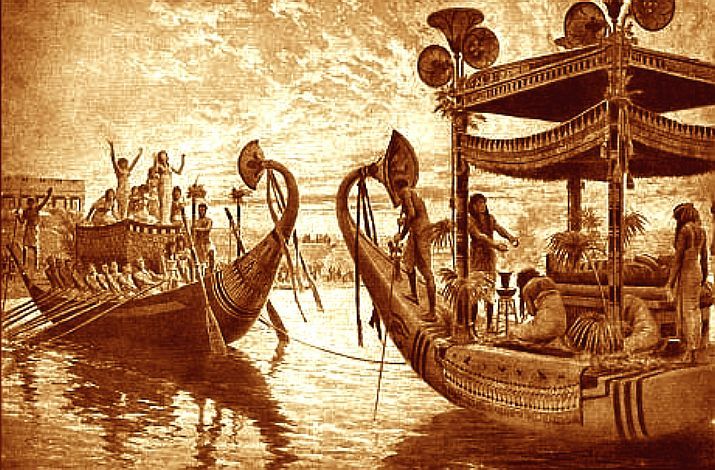Masetians
Old Masetia
When the gods were destroyed at Deismaar the destruction this created spread across the land, laying waste to everything in its path. To the north, on Cerilia, the northern Deismaar range much of this destruction and allowed the Cerillian people to survive the cataclysm (although the northern Deismaar range was destroyed) , but to the south the shockwaves of energy were able to escape into the plains. The area directly south of Deismaar, once a vibrant fertile land home to the Masetian people was devastated, leaving behind a vast wasteland of boiling deserts and ruined cities. Vast ruins now lie hidden in the sands where once great Masetian cities lay. It was then said that this race became extinct but there are rumours of surviving Masetians.
Masetians
Masetians were a people of the warm lands of Masetia, and have an apparence similar to the Khinasi. However, they have lighter complexion of a golden brown, which is still lighter in Masetian women, almost to a yellow. They are fine wizards and priests, and are touched by their religion deeply. Masetian doctors and sailors were among the best. For the most part Masetians are farmers.
Masetia
The Masetians called their homeland Kemaset in their native tongue, and this land is west of the Golden Peaks. This land is fertile, being fed by two annually flooding rivers, the Hatet and the larger Nukep. Along the banks of the Nukep, among a group of hills, lies the Masetian capital of Nekhor. This city is as old as the City of Anuire, and at least half as large. Here the pharaoh lived, and the main temples to Horu, Atut-Ra, Kontu, Rahuti, Sera, Inuty, and Ranet all reside. At the mouth of the Nukep is the city of Masetis, a large coastal city where the Masetian navy docks and the huge chief temple of Nebhet is located (this was formally a temple to Maset). The Masetian navy was large, the largest navy in Aduria and Cerilia, though not a third as large as it used to be. Masetis was the old capital of Masetia, before the fall of the empire and is older than even the City of Anuire, and used to be larger than Nekhor. The Nukep and
the surrounding lands form the realm of Djeba. The goblin nation of Taz Bordul to the north and the Scropian's Realm to east. South of Djeba, is the nation of Waset. Waset is a drier, less fertile realm that mostly depends on the coast and trade to support itself. Each of the provinces in Masetia is known as a Nome, and each has its own symbol along with its name.
Naming Traditions
Feminine names
Anipe, Bennu, Chione, Khepri, Mesi, Panya, Sanura, Zahra
Masculine names
Abasi, Beb, Chaths, Ebo, Heru, Jahi, Mert, Nile, Paki, Serapis
Family names
Mohamed, Mahmoud, Ibrahim, Gamal, Mostafa
Culture
Major language groups and dialects
Masetians speak Kemasetan. However most modern scholars call it Masentian.
Culture and cultural heritage
Masetians also share the Khinasi's respect for the intelligent, and not the rich. They have a strong concept of justice, referred to as Maat, and believe the gods judge them to decide whether they live a happy afterlife or suffer in endless void.
Average technological level
They have similar technology to the Khinasi people. However, Masetians do not have any crossbows, halberds, partisans, cutlasses, or buckler shields. Unlike the Khinasi though, they do have body shields and Improved Khopeshes (12 gp, 5 lbs, 1d6+1).
Art & Architecture
In art eyes are used a lot as well as waves. Gold and eyes are the most common and vibrant colours on display in their art.
Pyramids are common structures for worship but they can also be simple minimalistic courtyards depending on the relation to royalty.
Common Myths and Legends
The Masetians have their own names for the gods. The names for the old gods and their view of them are: Maset (Masela), goddess of the seas and the floods who created the other gods; Asir (Anduiras), god of rulership who taught the people how to be civilized; Regeb (Reynir), god of the earth and its inhabitants; Ferhut (Vorynn), god of wisdom, writing, the moon, and magic; Bet-Ra (Basaïa), goddess of the sun; Zakhet (Azrai), god of evil, the desert, and storms. After Deismaar, the Masetians basically viewed the new gods as the children of the old, the gods giving birth to them with their energies as a parting gift. Maset and Asir are believed to have given birth to Horu and Nebhet, and the others like so. The gods that truly are the children of gods are believed to be so. The Masetian names for the current gods follow in order of number of worshippers: Nebhet (Nesirie), Horu (Haelyn), dead Asir (Erik), Atut-Ra (Avani), Kontu (Cuiraecen), Rahuti (Ruornil), Sera, Inuty (Eloele), Ranet (Laerme), Ba-Neken (Belinik), Sukhet (The Serpent, a young man discovered the Serpent during a dream and spread the religion, acting as the Voice of the Serpent) and Kriesha is unknown.
Much of the faiths remain the same...except for avatar appearance and their symbol, which are different. All of the male gods appear with the form of Masetian male with the head of an animal, except for Asir who appears as a green skinned man with a mossy beard and all of the deities carry different equipment (if they carry equipment). Asir is viewed as a unliving god who guards pristine, natural places. Kontu is not viewed with his storm aspect, as storms are viewed as evil by the Masetians. Each deity's patron animal, which heads the gods wear, are as follows (Asir has no patron animals, he is the patron of all animals not covered; Sera and Atut-Ra also do not have animals). Horu the falcon, Kontu the hawk, Nebhet the cow, Rehuti the ibis, Inuty the cat, Ranet the lion, and Ba-Neken the jackal.
Major organizations
Masela is the main religion of this culture
Encompassed species
Related Items
Related Myths



Comments